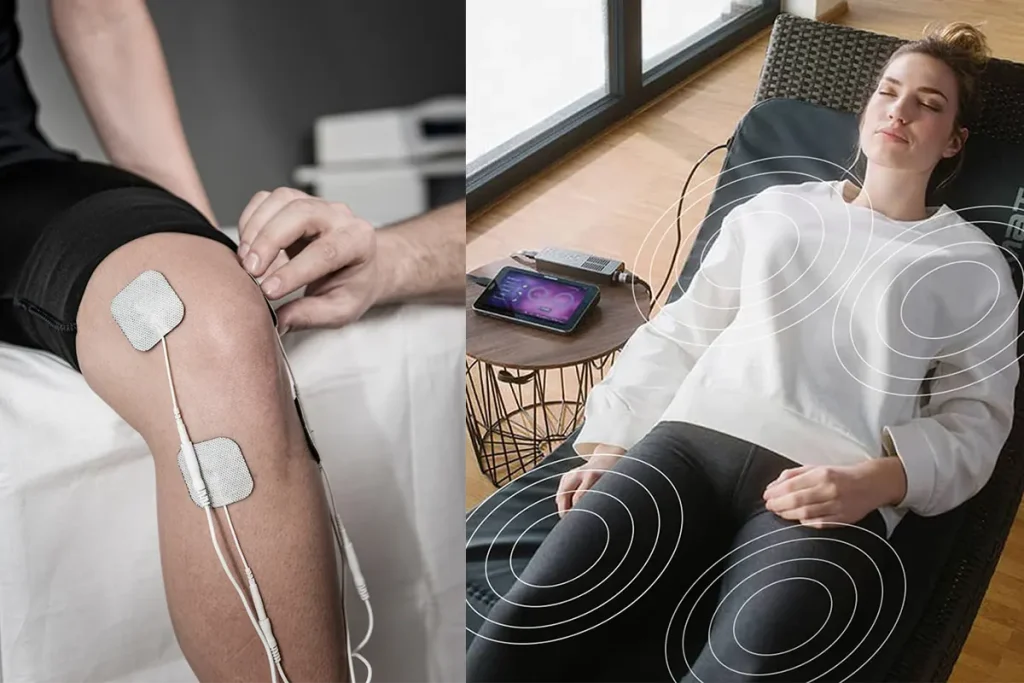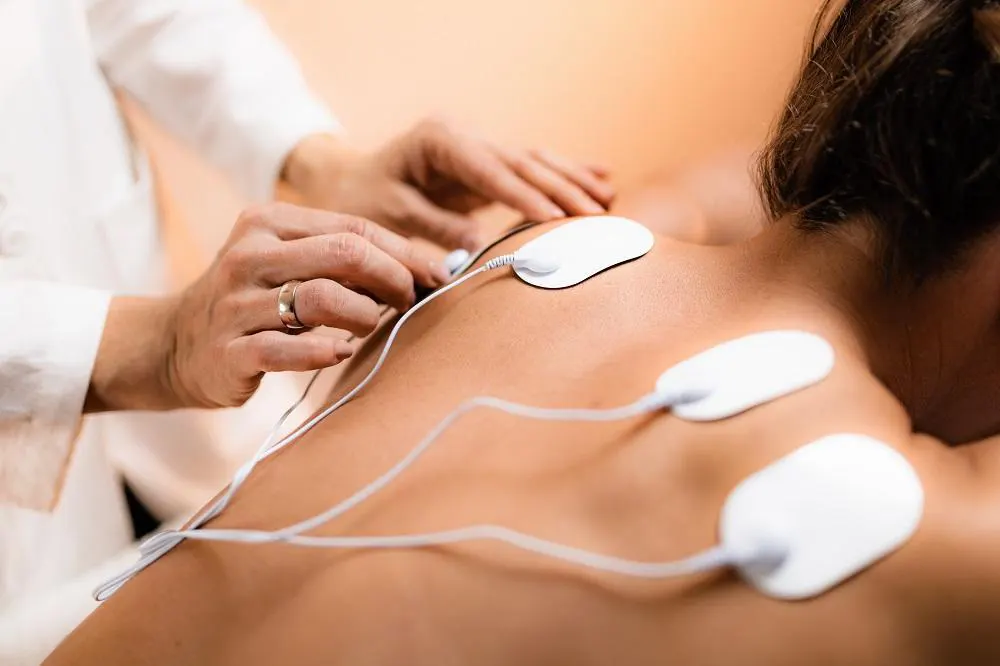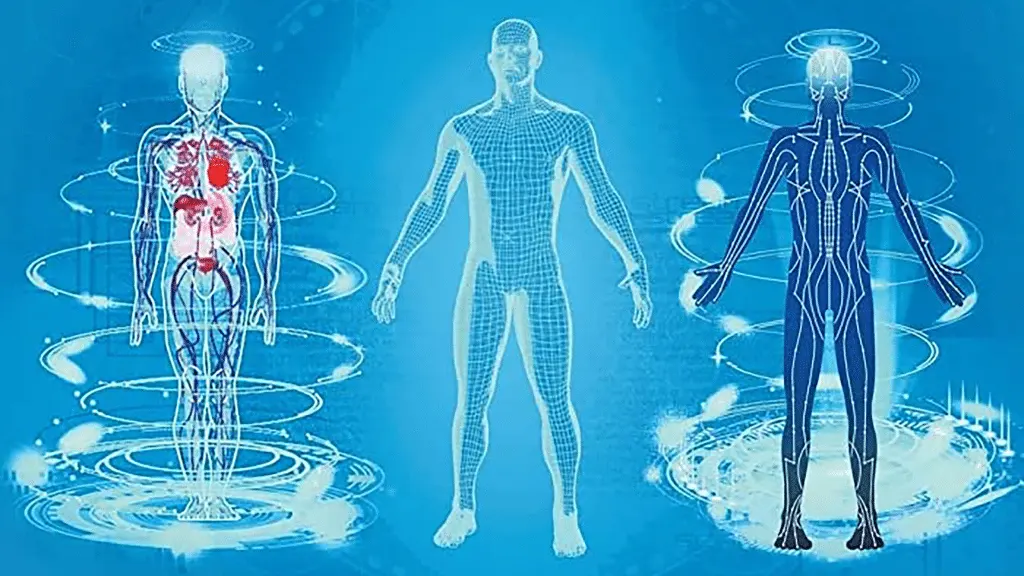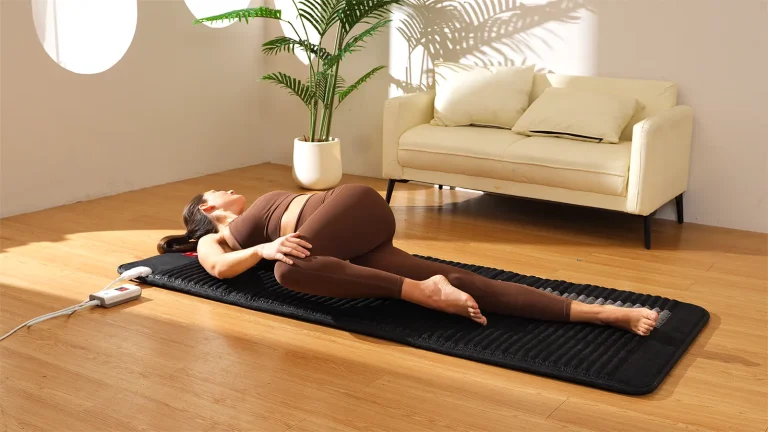TENS vs PEMF Therapy: What Are the Differences?
Looking for non-drug physical therapy for back pain or sciatica? Maybe you’ve heard of PEMF or TENS, but don’t know exactly what they are. Maybe you’ve never heard of PEMF and TENS therapy. Even if you have heard of one or the other or both, you may not know the difference between them. Here’s some information to help you understand PEMF vs. TENS.
TENS vs PEMF
Chronic pain can be physically and emotionally draining. Not only does it affect your work and daily activities, it undermines your happiness and wellness. Millions of Americans suffer from chronic pain and have few options for treatment. Besides surgery and medication, two popular treatments, transcutaneous electrical nerve stimulation (TENS) and pulsed electromagnetic field (PEMF) therapy, use electromagnetic energy to relieve acute and persistent discomfort. Each technique has its own strengths that are important to consider when choosing between TENS and PEMF.

TENS manages pain by causing electrical changes in the body, while PEMF modifies electrically charged particles within your cells. Although seemingly similar, the goal of each approach is fundamentally different. TENS treats pain as a symptom. PEMF treats the source of the pain.
What is TENS Therapy?
TENS, or transcutaneous electrical nerve stimulation, therapy uses low-voltage electrical currents to disrupt pain signals in the body. Transcutaneous electrical nerve stimulation therapy is a type of pain treatment; it may be used to treat chronic or acute pain.

TENS machines are small, battery operated devices with electrodes that attach to the skin. Through these electrodes, a current of electricity is sent directly into the body. The electricity passes through the nerve fibers in the body to block signals from pain receptors from reaching the brain.
Transcutaneous electrical nerve stimulation therapy is considered to be a type of electrotherapy because it involves the delivery of electrical currents directly into the body.
When a patient receives TENS, electrodes that are attached to the patient’s skin deliver electrical impulses directly to the nerves. Pain signals are overridden by this sudden burst of energy. At the same time, the current stimulates the body to produce dopamine and endorphins-the body’s natural painkillers.
As a result, patients who receive TENS therapy report not only a reduction in pain, but also a greater sense of well-being and relaxation. However, the effects of TENS rarely last more than 24 hours, even though it provides quick relief from acute and chronic pain, such as arthritis, fibromyalgia, and muscle strains. In some cases, the pain returns once the unit is turned off. Fortunately, TENS units are designed to work at home as well as in clinical settings, allowing patients suffering from severe pain to seek relief any time of the day or night.
Research has shown that TENS therapy can help people who suffer from acute or chronic pain with many of the following conditions:
- Nerve pain
- Pain after surgery
- Osteoarthritis (a disease of the joints)
- Fibromyalgia (whole-body aches)
- Tendinitis (inflamed or irritated tendons)
- Labor and menstrual pain
- Neuropathy (damage to nerves connecting brain/spinal cord to body)
- Lower back pain
- Peripheral arterial disease (hardening of the arteries that supply blood to the body)
- Arthritis or other joint pain
What is PEMF Therapy?
Unlike TENS, PEMF does not block pain. Instead, it works with the body’s natural magnetic fields to stimulate the healing process. Cellular communication occurs through bioelectric signals. When exposed to magnetic fields, electrically charged particles (ions) inside and outside cell membranes become compressed, forcing them to circulate at an accelerated rate. This affects cell regeneration, metabolism, and respiration, the process of converting glucose into energy.

During a PEMF treatment, magnetic waves are applied through a coil that is placed on or attached to the body in a snug fit. When the device is activated, an electric current flows through the conductive material inside the coil, creating a magnetic field. By decreasing the power at specific intervals, pulses are created that penetrate deep into the human tissue and increase cellular activity in the target area – healing the body from the inside out.
Health Benefits of PEMF Therapy:
PEMF therapy is a safe, effective, and easy way to promote wellness, treat pain, reduce recovery times, and improve your overall quality of life. Pulsed electromagnetic field therapy offers several health benefits:
- increases cell oxygenation
- promotes cell recovery
- accelerates healing rates
- removal of cell waste
- improves cell metabolism
- increases immune response
- improves cell health
- promotes proper cell function
- reduces pain, swelling, and inflammation
Almost anyone can benefit from the use of pulsed electromagnetic field therapy, and there are no negative side effects with PEMF therapy. However, you should not use PEMF therapy if you have an electrical medical implant.
PEMF therapy has been used to treat small household pets — such as dogs, cats, and birds — large stock animals, as well as humans. The FDA approves PEMF therapy as a treatment for a number of different health issues including depression, healing nonunion bone fractures, and muscle stimulation.
Is PEMF Better than TENS?
Studies have shown that PEMF therapy shortens recovery time, reduces inflammation, and helps alleviate painful conditions such as arthritis, lumbago, and sciatica. Relief is quick, but not immediate. Though patients who undergo PEMF generally report greater pain reduction than patients who receive TENS, it’s generally not noticeable until they’ve completed two or three sessions. What’s more, by strengthening bones, muscles, and other tissues, PEMF alleviates pain for weeks, unlike TENS. In some cases, the pain never returns at all. It’s a long-term solution that repairs and regenerates damaged organs in order to promote health and improve quality of life.
What Are the Differences Between TENS and PEMF Therapy?
As mentioned, TENS and PEMF are two frequently used modalities that are applied to promote pain relief. With this similar therapeutic goal, many often confuse the two and fail to differentiate their specific strategies for pain relief and underlying mechanisms of action. Each targets pain from a unique approach and affects different bodily systems and structures. TENS, the first of the two modalities, works through the application of electrical currents whereas PEMF therapy employs applied electromagnetic fields. While TENS temporarily affects the user’s pain perception, PEMF therapy actually works at the cellular level to promote tissue healing, thereby addressing pain as both a symptom as well as the underlying cause.
While TENS and PEMF therapy may share some common ground in their treatment goals, they should be differentiated in a number of important ways. In general, TENS provides faster, more localized treatment that focuses on short-term pain relief while PEMF therapy provides a more holistic approach that actually stimulates the body’s healing processes. Follow along as we uncover the inner workings of each to help you find the most appropriate therapy for your treatment goals.
1. Mechanism of Application
The first primary differentiator of TENS and PEMF therapy is the mechanism of application. TENS is applied using specialized electrodes attached directly to the skin, similar to what you see in most forms of electrotherapy. These electrodes conduct electrical currents from the device into the body and contribute to pain reduction through both exogenous means and endogenous production of dopamine. Often referred to as the “gate-control theory”, the sensory input received from the TENS device overrides pain impulses thereby blocking pain signals from traveling to the brain.
2. Stimulation Level to Facilitate Healing
On the other hand, PEMF therapy works by creating electromagnetic fields that combine with the natural magnetic fields in the body to facilitate healing. In doing so, they facilitate healing at a cellular level working with the body’s natural systems to reduce inflammation, expedite recovery, and repair damaged cells and tissues. PEMF therapy devices typically cover a larger area in the body and don’t require direct skin contact to function. While TENS more directly affects the nervous system and pain processing, PEMF works from a cellular level to heal from the inside out.
3. Portability
Both types of modalities can be found in a wide range of devices however TENS units tend to be the most compact and portable. Typically made to fit in your pocket, TENS units are handheld and allow you to both travel and wear the device as you go about your day. Alternatively, PEMF therapy generally comes in the form of a mat, although full-body platforms and paddles also exist. The mats tend to be fairly portable but do require you to lie or sit on them during application, making them slightly less convenient in terms of portable use.
4. Type of Healing
When it comes to healing, we tend to use TENS devices for short-term pain relief purposes. Although it is extremely effective for many, the benefits of TENS tend to wear off shortly after application is completed. It treats pain as a symptom and often provides users with muscular relaxation but doesn’t actually heal the body in any way. On the flip side, PEMF therapy actually targets the cause of the pain from a cellular level, and stimulates the body’s healing processes. Although you may not feel the benefit as immediately as you do with TENS, these intra-cellular changes can result in reduced inflammation and tension in the muscles.
5. Localized vs. Holistic
When comparing these two forms of therapies, consider your desired application location. If you are looking to target a specific body part, TENS provides direct, localized stimulation. If you are looking to stimulate the body as a whole and reap system-wide recovery, anti-inflammatory and energy-inducing benefits then PEMF therapy is going to be the better modality. Which therapy you will prefer ultimately depends on what exactly you’re trying to treat.
6. Speed of Treatment
One of the biggest draws to TENS therapy is the speed with which you will feel results. As soon as the electrodes are applied and the device is powered on, you will start to feel the therapeutic effects almost immediately. While PEMF doesn’t take long to take effect, you just can’t beat the immediacy of TENS.
7. Cost
In terms of cost, TENS units are a great budget option and on average, go for between $100- $200. With a wide variety of options, some devices can be found for less than $50 and some higher-end models with varying current options can be significantly more expensive. While the costs of PEMF therapy mats aren’t outrageous, they do tend to have a higher price point, averaging around $500 with some premium products costing upward of thousands of dollars. If budget is a major concern, TENS units do tend to fall on the inexpensive end as far as health and wellness products go.
Which One You Need, TENS or PEMF?
With all of this information, choosing the best modality for you will require you to consider all of the above factors. In terms of outcomes, TENS will treat pain as a symptom but PEMF therapy will target the pain at its source, stimulating healing and rehabilitation. If you’re looking for fast treatment or localized short-term pain relief, TENS can be a great option and can be used for both acute injuries and chronic, pre-existing conditions. PEMF therapy, on the other hand, offers a more holistic therapy that gets at the root of the pain and can provide more lasting long-term outcomes. In short, choosing the right modality depends on your condition and your unique wellness goals. Both TENS and PEMF therapy offer excellent options for pain management, recovery, and overall well-being.
With evolving technologies and an ever-growing amount of therapeutic devices on the market, it’s important to understand the underlying mechanisms and goals of different therapeutic modalities. TENS and PEMF are two such modalities that offer users varying approaches to pain management. With unique applications, mechanisms of action, and levels of portability, there are a number of factors to consider when choosing the most appropriate device for you.
Consider IREVIKIT Bioactive Mat with TENS Unit
With evolving technologies and an ever-growing amount of therapeutic devices on the market, it’s important to understand the underlying mechanisms and goals of different therapeutic modalities. TENS and PEMF are two such modalities that offer users varying approaches to pain management. With unique applications, mechanisms of action, and levels of portability, there are a number of factors to consider when choosing the most appropriate device for you.

BioActive PEMF Mat
★★★★
★
4.2(1,079 reviews)
$558.00
was $698.00
20% off
Designed with a proprietary combination of Biomat PEMF, Infrared, Red Light, TENS unit to give you the maximum health benefits, iReviKit BioActive PEMF Mat relieves common muscle, back, knee, elbow, joint pain and more with both PEMF and TENS therapy.
If you’re looking for a high-performing pain relief device at home, consider IREVIKIT BioActive PEMF Mat with TENS Unit, which can be your ultimate body pain relief device for long-term results without pain recurrence. Apart from PEMF and TENS therapy, it also combines infrared, red light, healing gemstone, negative ion multiple therapies into one tool kit to help you get the maximum health benefits.







